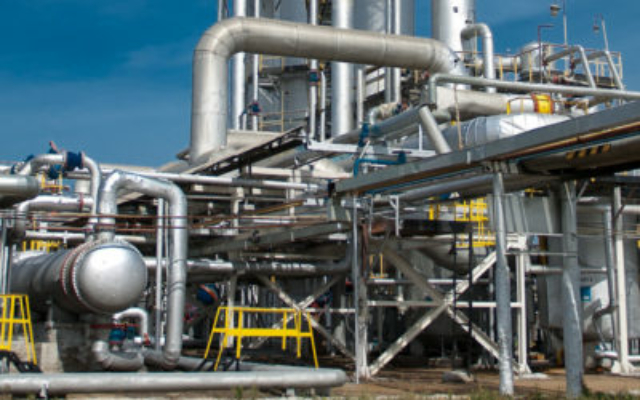1.0 Introduction
Oil & Gas projects have comprehensive technical and commercial requirements for the supply of capital equipment. These requirements come in the form of a Request for Quotation (RFQ) and cover a wide range of topics including design calculations, industry and regulatory compliance, contractual terms, manufacturing, safety, quality, testing, documentation, installation, operation and more. The complexity of project requirements is driven by risk analysis performed at the project’s front end. The relationship between project requirements and risk the Project Owner may encounter are linear, i.e., more risk = more requirements, to mitigate those risks.
Vendors/sub suppliers of capital equipment must, without exception, comply with the RFQ requirements in order to be considered for award of a procurement contract.
Project RFQ requirements can be a few hundred up to several thousand pages. Larger Oil & Gas projects will have more comprehensive requirements (larger volume). Oil & Gas project RFQs are, by their risk-adverse nature, rife with technical, commercial and contractual detail. This article covers the most common, but not all, RFQ details. Each project must be carefully evaluated to determine the necessary RFQ complexity. It is the author’s experience that trying to either secure deviations to the RFQ requirements or attempting to ignore them can be a costly exercise.
The Primary Supplier (purchaser) must not only comply with the project requirements but also ensure their vendors/sub suppliers comply as well.
This article is written for Oil & Gas professionals having working familiarity with engineering & design, class societies, industry/regulatory standards & involvement, procurement contracts, manufacturing, safety and quality management. Methodologies and best practices covered in this article will aid in the development of vendor/sub supplier RFQs that adequately cover rigorous project requirements.
2.0 Primary Vs Secondary RFQs
Primary RFQs are the first level RFQ the Primary Supplier receives from the Project Owner or Engineering, Procurement and Construction (EPC) company. Secondary RFQs are generated by the purchaser when a technical subset, requiring specific vendor/sub supplier expertise, is required.
The Primary RFQ documents project scope, along with detailed technical and commercial requirements and all related reference documentation, drawings and deliverables contained in the RFQ. The reference documentation is usually in two categories; a) proprietary reference material developed by purchaser/Project Owner/EPC and b) publicly-available industry and/or regulatory standards. Obtaining industry and regulatory standards (cited or current version) is the vendor/sub supplier responsibility and they should be made aware of that requirement (formally), up front.
In order to develop an effective vendor/sub supplier RFQ strategy, the purchaser should begin with the end in mind and thoroughly understand all requirements of the Primary RFQ and how they relate to the vendor/sub supplier.
Sending the Primary RFQ and project reference material to vendors/sub suppliers is not recommended. Asking them to determine what they bid on from the Primary RFQ can lead to confusion, excessive communication, mistakes, double work and inaccurate cost. In order to be clear and effective, the vendor/sub supplier RFQ must be specific and detailed.
3.0 Common Secondary RFQ Requirements
A Secondary RFQ to a vendor/sub supplier typically contains topics covered in the following sections.
3.1 Introduction/Scope
This section defines the basic scope of deliverables, in terms of equipment design, manufacture and documentation.
3.2 Instruction to Bidders
This section contains pertinent instructions to the bidder regarding their response to the RFQ and contains topics in the following sub sections.
3.2.1 Definitions
This section contains word or acronym definitions contained in the RFQ.
3.2.2 RFQ Acknowledgement
This section confirms the vendor/sub supplier’s receipt of and interest (or not) in responding to the RFQ as well as their basic qualifications and contact information.
3.2.3 Documentation Required With Vendor/Sub Supplier Proposal
This section defines what the vendor/sub supplier is expected to furnish with their proposal. That information might include;
- Scope of supply narrative
- Deviation/clarification list
- Sub vendor list
- Preliminary drawings (e.g., GA, P&ID, one-line diagrams)
- Fabrication schedule
- Deliverable document schedule
- Inspection and test plan
- Quality plan
- Quality management system certification
- Statement of compliance to all technical and regulatory requirements
- Statement of compliance to material origin requirement (if requested)
- Other related information
3.2.4 Proposal Submission
This section defines how and when the proposal is submitted.
3.2.5 Proposal Validity
This section states the requested validity term of the vendor/sub supplier quotation.
3.2.6 Pricing & Currency
This section requests the vendor/sub supplier formally state the pricing and preferred payment currency for the requested scope, broken down by engineering/design/project management/QA, physical component(s), agreed documentation deliverables, transportation and other topics specific to the RFQ.
3.2.7 Terms & Conditions
This section requests vendor/sub supplier confirmation of agreement to purchaser and/or Project Owner/EPC terms and conditions along with any exceptions, clarifications or deviations agreed between purchaser and vendor/sub supplier prior to proposal submission. Involvement of sub supplier Ts & Cs in their proposal is not recommended. Instead, it is much cleaner to handle these situations with specific mutually-agreed deviations, clarifications or exceptions.
3.3 Technical Description
This section defines the technical aspects of equipment deliverables including functional description, operational/control philosophy and other relevant topics.
3.4 Reference & Technical Documentation
This section provides a detailed listing of all relevant project reference and technical documentation, document numbers and their location in the RFQ requirements (aka Appendices). This listing should also contain any salient notes on specific comments or reference material the vendor/sub supplier should be made aware of.
Include a requirement in the RFQ that a) the vendor/sub supplier has the sole responsibility to request/obtain any missing project information, and b) that Primary RFQ requirements prevail over purchaser, Project Owner or EPC review, approval and/or comment to vendor/sub supplier submissions or inquiries (see next section for agreement variances).
3.5 Deviations, Clarifications & Exceptions
This section requires the vendor/sub supplier negotiate variances to the RFQ prior to proposal submission. This will minimize confusion and scope creep during the RFQ process and should be agreed to by the parties, to greatest extent possible, prior to submission of vendor/sub supplier quotation.
3.6 Deliverable Documentation & Document Control
This section specifies where the deliverable documentation and document control procedures are located in the RFQ and any specific notations the vendor/sub supplier should be made aware of. Also include special project requirements for document or drawing format, units of measure or other project documentation standards or variables.
3.7 Data Book Requirements
This section advises Purchaser/Project Owner/EPC review- and details-specific requirements for data book structure, which could include:
- Cover sheet format/contents
- Table of Contents requirements
- Searchable vs non-searchable PDF
- Document navigation aids (bookmark pane, links, etc.)
- Guidelines for inclusion of scanned document/images (deskew/despeckle, cutoff text/data/image, readability, resolution, OCR, etc.)
- Requirement for no embedded files or passwords (PDF compilation no possible with passwords)
- Other relevant topics
3.8 Quality, Inspection & Testing
This section draws vendor/sub supplier attention to the project’s quality, inspection and testing requirements including:
- Pre-inspection meeting requirements
- Announced or unannounced visits to sub supplier by specific parties
- Class and/or regulatory involvement
- Testing standards and criteria
- Testing documentation requirements
- Test instrument certification
- Other specific test or inspection requirements
3.9 Shipping & Handling
This section would include vendor/sub supplier responsibility for any shipping, packing or transportation requirement and the delivery terms (INCOTERMS).
3.10 Installation
If vendor/sub supplier installation support is required, this section would be added and include the requirement for that support and any pricing and service call-out details.
3.11 Purchaser General Terms & Conditions
This section defines the RFQ Ts & Cs that apply and their location in the reference material. These Ts & Cs could originate from purchaser and/or Project Owner/EPC.
3.12 Reference Material/Appendices
This section defines the location and quantification of all reference material (Appendices). As a best practice, the Appendices should be a single, navigable PDF compilation of the project’s reference material, arranged/numbered in the same order shown in the listing of reference material in the RFQ.
4.0 Takeaways
- Developing comprehensive RFQs saves time and money in project execution and vendor/sub supplier management
- Project Owner/EPC RFQs are comprehensive, in order to reduce their risk
- Rest assured that when the project execution phase comes, the purchaser/Project Owner/EPC will apply laser-focused scrutiny on compliance to the RFQ requirements and reference material
- The purchaser/Project Owner/EPC project execution team has a markedly different focus than their RFQ team – be prepared
- When developing RFQs; a) begin with the end in mind and b) remember that there is heavy interest charged on missed opportunities
Author’s Note
Should the reader have specific questions about the topics of this article or need RFQ development or deliverable documentation support, please contact the author at [email protected] . The author has 30+ years’ experience in Oil & Gas RFQ development, project/supplier management and technical documentation development.












